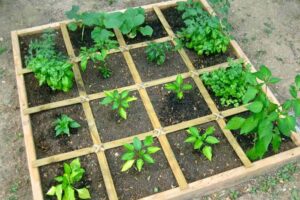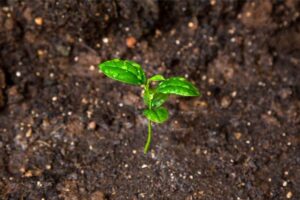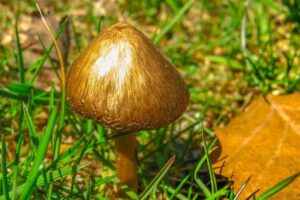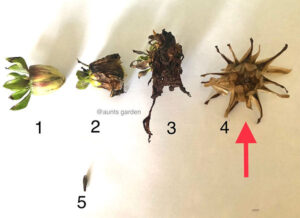
Dahlias are beautiful and popular flowering plants that can add a lot of color and life to any garden. However, a major challenge with these plants is determining if the tubers (the underground stem of the plant) are still alive. If the tubers are dead, then the dahlia will not be able to survive and will need to be replaced. Fortunately, there are a few key tips that can help you tell if your dahlia tubers are dead. These include checking the tuber for signs of rot or decay, testing the tuber for firmness, and examining the roots for signs of life. With these steps, you can ensure that your dahlia is healthy and ready to bloom.
Identifying Signs of Dead Dahlia Tubers
Dead dahlia tubers can be difficult to identify, but it is important to do so as soon as possible to avoid wasting time and resources. Signs of dead dahlia tubers include discolouration, softness, and an unpleasant odour. Discolouration is usually a sign of decay, and can be seen as dark spots or patches on the tuber. Softness is a sign of rot, and the tuber will no longer be firm to the touch. Unpleasant odours are an indication of decay and can be detected when the tuber is cut open. These signs should be taken seriously and the tuber should be removed from the garden. If you suspect that a dahlia tuber is dead, it is best to remove it immediately and discard it in order to prevent any further damage to the garden.
Causes of Dead Dahlia Tubers
Dead dahlia tubers are a common problem among gardeners, but it is not always easy to determine the cause. The most common cause is a lack of water – if the soil is too dry, the tuber will not be able to absorb enough moisture, leading to dehydration and eventual death. Poor soil drainage can also be a culprit, as waterlogged soil can suffocate the tuber. Pests, such as slugs, snails, and aphids, can also cause damage to dahlia tubers, resulting in rotting. Additionally, disease can be a factor, such as Rhizoctonia, which is a fungal disease that causes the tuber to rot. Finally, frost can cause significant damage to the tubers, resulting in their death. Knowing the cause of dead dahlia tubers is essential to preventing it from happening again.
Assessing the Condition of Dahlia Tubers
This blog post discusses the importance of assessing the condition of Dahlia tubers prior to planting. It explains the best methods of assessing the condition of the tubers, including inspecting for rot, shape and size, as well as signs of damage. It also provides advice on how to store the tubers so that they remain in the best condition possible. The post concludes with information about the best time to plant Dahlia tubers, and how to prepare them prior to planting. This blog post is valuable for anyone interested in growing Dahlias, as it provides essential information on assessing the condition of the tubers, and how to store and plant them for optimal results.
How to Revive Dahlia Tubers
Reviving dahlia tubers is surprisingly simple, although it might seem intimidating at first. Start by soaking the tubers in warm water for a few hours before planting them in a container filled with potting soil. Place the container in a sunny spot and water it regularly. When the shoots start to emerge, carefully separate them before planting them in the garden or transplanting them into larger containers. The tubers will need to be watered regularly and fertilized occasionally to ensure that they remain healthy and strong. With a little bit of care and attention, you can revive dahlia tubers and have beautiful flowers blooming in your garden in no time!

Preventing Dahlia Tubers from Dying
Every gardener knows that dahlia tubers can be a tricky plant to get right. Even when you have done everything right, the tubers can still die. So, how can you prevent your dahlia tubers from dying? The key is to take the necessary steps to ensure your tubers have adequate drainage, are planted at the right time, and are given proper care. Plant your tubers in a well-draining soil mix and make sure it is not too wet or too dry. Plant your tubers in the late spring or early summer and water them at least once a week. Finally, provide your dahlia tubers with plenty of sunshine and fertilize every four weeks. By following these simple steps, you can help prevent your dahlia tubers from dying and enjoy a beautiful bloom come summertime.
How to Dispose of Dead Dahlia Tubers
If you have a garden full of dead dahlia tubers, disposing of them can be a tricky job. The best way to dispose of dead dahlia tubers is to start by digging up the tubers and removing any soil. Then, put the tubers in a plastic bag and seal the bag. You can also place the tubers in a cardboard box, which you can then cover with newspaper or a plastic bag. After disposing of the dead tubers, it is important to clean up the area to prevent any spread of disease or pests. Finally, you can either compost the tubers or put them in the trash. With these simple steps, you can easily dispose of dead dahlia tubers and keep your garden healthy!
Tips for Growing Healthy Dahlia Tubers
Dahlia tubers are an incredibly beautiful and rewarding flower to grow. However, it can be tricky to ensure they stay healthy and grow to their full potential. Here are some tips to ensure your Dahlia tubers thrive:
1. Start with healthy tubers: Healthy Dahlia tubers should feel firm with no soft spots or discoloration.
2. Plant in a sunny spot: Dahlias love full sun and need at least 6 hours of sunlight a day.
3. Amend the soil: Amend the soil with compost or manure to ensure the tubers have enough nutrients.
4. Keep the soil moist: Water your Dahlias regularly, but be careful not to overwater.
5. Fertilize: Feed your Dahlias with a balanced fertilizer every few weeks.
Following these tips will help ensure your Dahlia tubers thrive and produce beautiful blooms throughout the season. With just a little extra effort, you can have a stunning Dahlia garden to enjoy.
Troubleshooting Common Dahlia Tuber Problems
The Dahlia tuber is a stunning flower, but even the most experienced gardener can occasionally run into problems. In this blog, we’ll cover the most common tuber issues and provide helpful advice on how to troubleshoot and resolve them. From spotting signs of disease to learning how to properly store the tubers, this blog will arm you with the knowledge you need to successfully grow Dahlia tubers and ensure a beautiful and bountiful harvest. So if you’re a Dahlia enthusiast, let’s get started on troubleshooting common tuber problems!
FAQs About the how to tell if dahlia tubers are dead
1. What are the signs that a dahlia tuber is dead?
If the tuber is soft and mushy, has darkened or discolored, has a strong odor, or has any visible mold, it is likely dead.
2. Can I revive a dead dahlia tuber?
No, unfortunately once a dahlia tuber has died, it cannot be revived.
3. Is it possible to prevent dahlia tubers from dying?
Yes, ensuring that the soil is well-draining, avoiding over-watering, and planting dahlia tubers in the ground at the right time of the year can help prevent them from dying.
Conclusion
In conclusion, it is important to know how to tell if dahlia tubers are dead. If the tubers look dry and shriveled, have no growth, and have a musty smell, then they are likely dead. If the tubers are firm and have some growth, then they are likely alive. If the tubers are unsure, then it is best to wait and observe growth for a few weeks before deciding if they are dead or alive.







